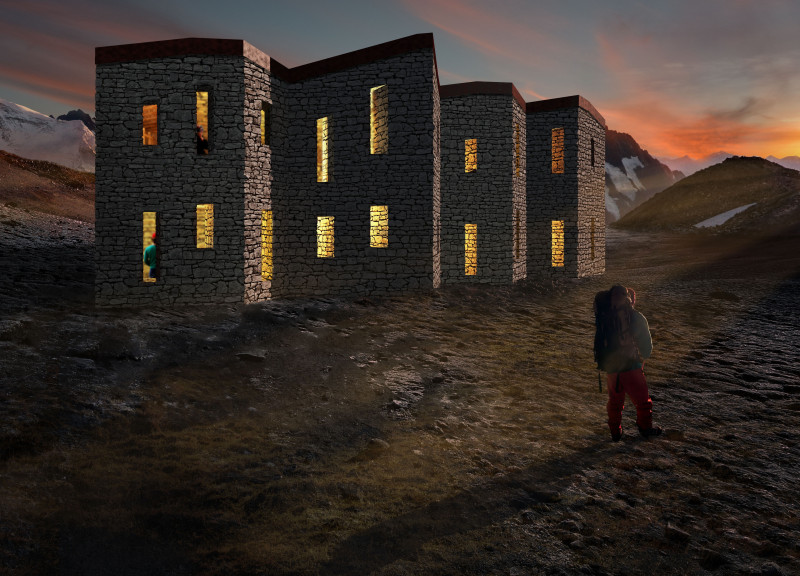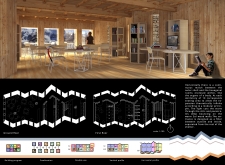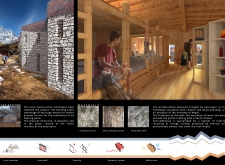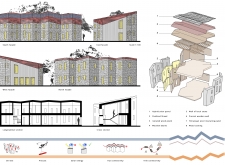5 key facts about this project
This architectural endeavor serves as a multifunctional space, designed to accommodate a variety of activities that foster engagement and interaction. The primary function is to create a hub where individuals can congregate, collaborate, and thrive, thereby emphasizing social connectivity. Each space within the structure has been meticulously planned to facilitate both individual and collective pursuits, making it a versatile addition to its locale.
The exterior of the building is characterized by a harmonious blend of materials that convey both modernity and warmth. The use of natural materials such as wood, stone, and glass establishes a connection with the landscape while providing durability and aesthetic richness. The façade is adorned with strategically placed windows that not only enhance natural light penetration but also offer glimpses into the activities occurring within, thereby promoting transparency and inviting curiosity.
One notable aspect of the project is its innovative approach to spatial organization. The layout encourages fluid movement throughout the building, with open floor plans that enhance accessibility and visibility. This serves not only to invigorate the user experience but also reflects a design strategy that values collaboration and community involvement.
The architectural design incorporates green roofs and vertical gardens, exemplifying an awareness of environmental stewardship. These elements not only contribute to the building’s sustainability credentials but also provide aesthetic pleasure and improved air quality. Additionally, the integration of these green features serves to insulate the building, reducing the energy required for temperature regulation.
Interior spaces are designed with a focus on flexibility and adaptability. Movable partitions allow for various configurations, enabling the space to transform according to different needs. This is particularly important in modern architecture, where versatility is increasingly sought after. The interior palette is kept neutral, accentuated by the natural textures of the materials, ensuring that the focus remains on the activities occurring within.
Lighting plays a crucial role in the architectural design, with both ambient and task lighting thoughtfully integrated into the overall scheme. Large windows and skylights allow for the maximization of daylight, reducing dependency on artificial lighting and reinforcing the connection with nature.
The project also considers the acoustic environment, ensuring that each space is conducive to its intended functions. Use of sound-absorbing materials and strategic layout decisions mitigate noise pollution, thereby enhancing the overall user experience.
What sets this project apart is its holistic approach to design and function. It not only fulfills its basic purpose as a building but also acts as a catalyst for community engagement and environmental responsibility. The careful selection of materials, innovative spatial configurations, and commitment to sustainability are central to its identity.
Exploring the architectural plans, sections, and other design elements can provide further insights into the meticulous thought process behind this project. The attention to detail in its architectural designs demonstrates an understanding of contemporary needs while remaining grounded in a vision for the future. For those interested in delving deeper into unique architectural ideas and thoughtful design approaches, a comprehensive examination of the project presentation is highly encouraged.


























